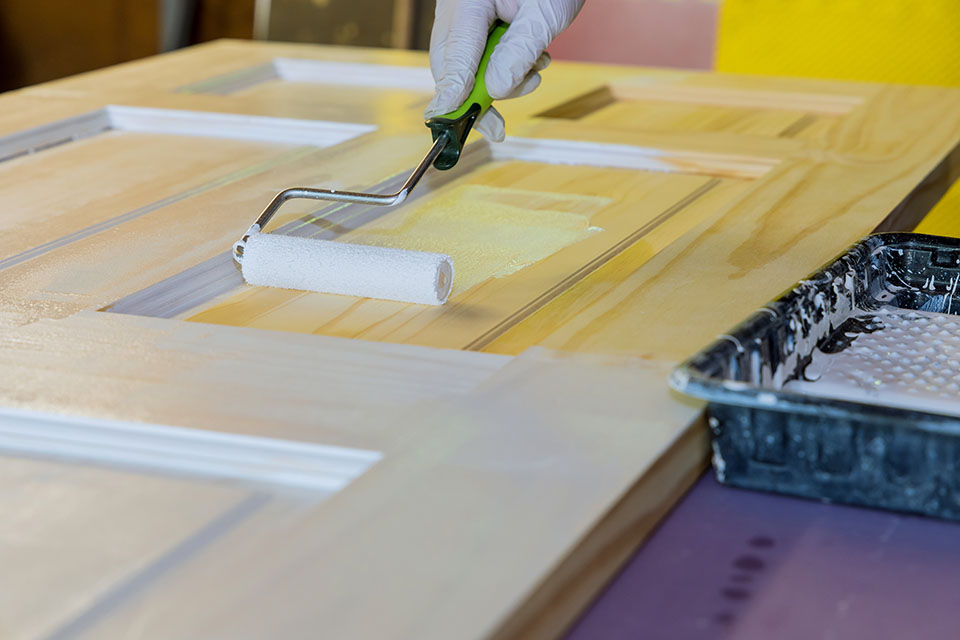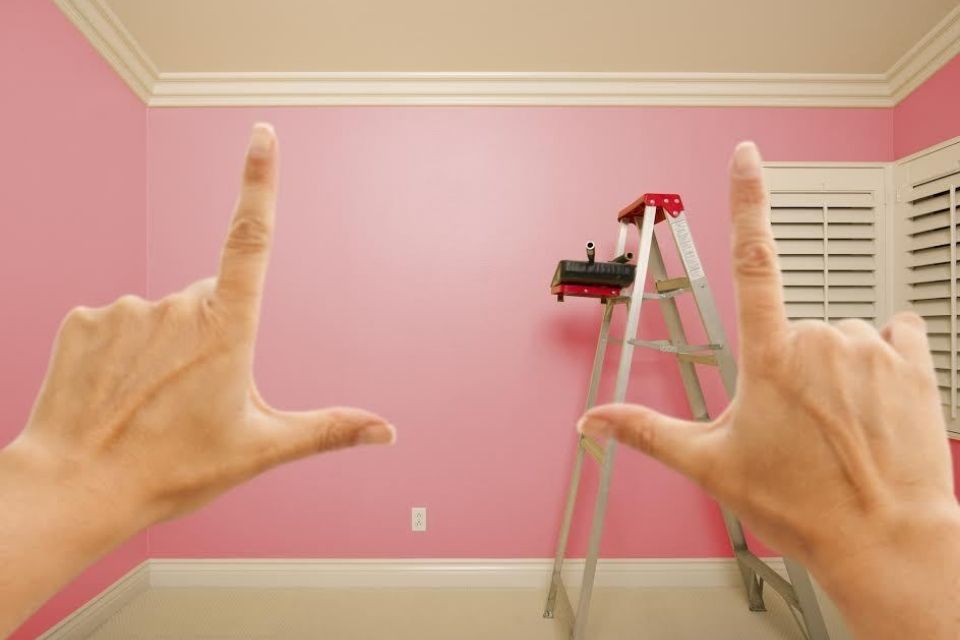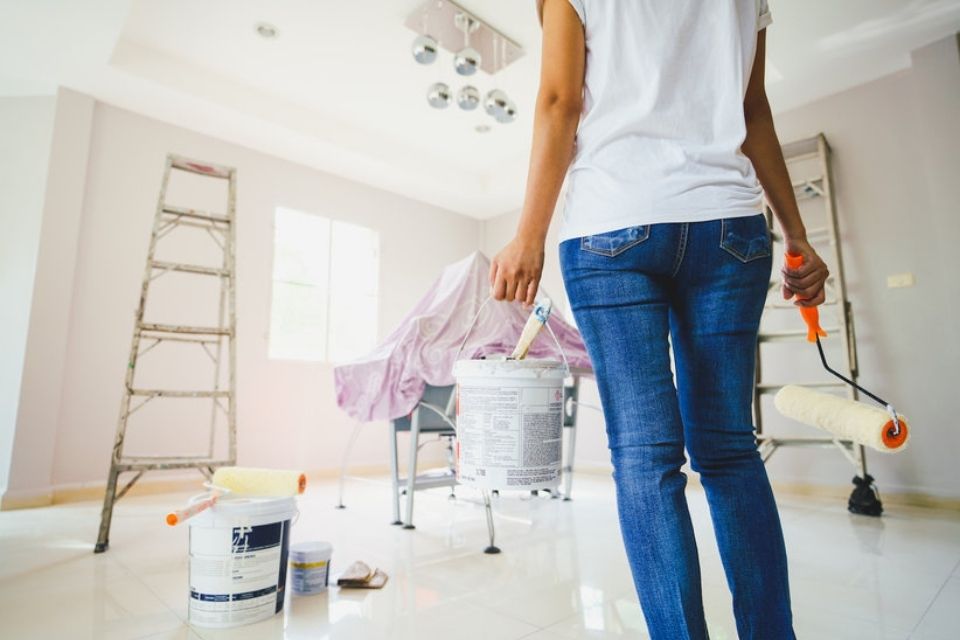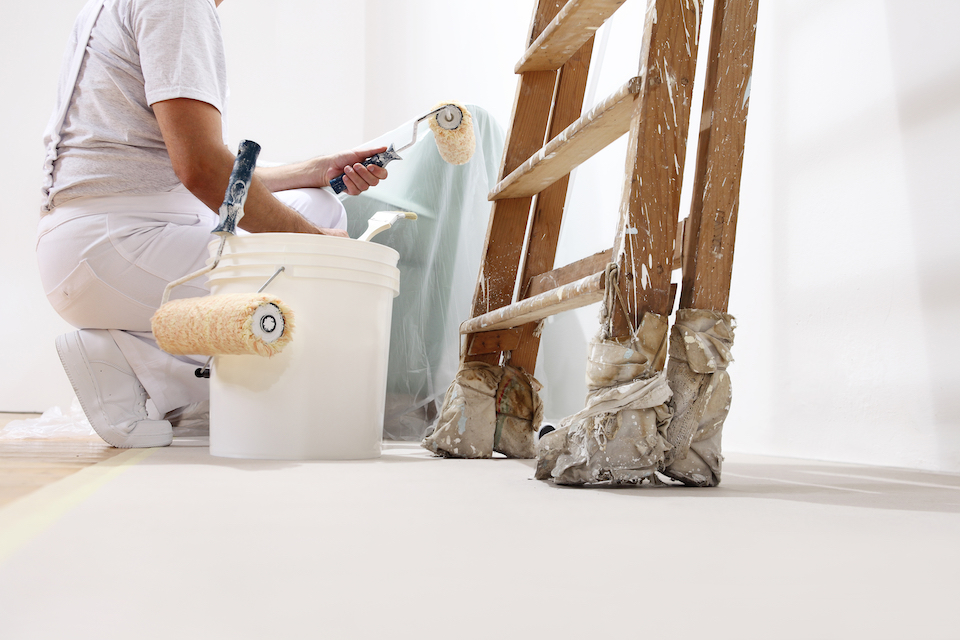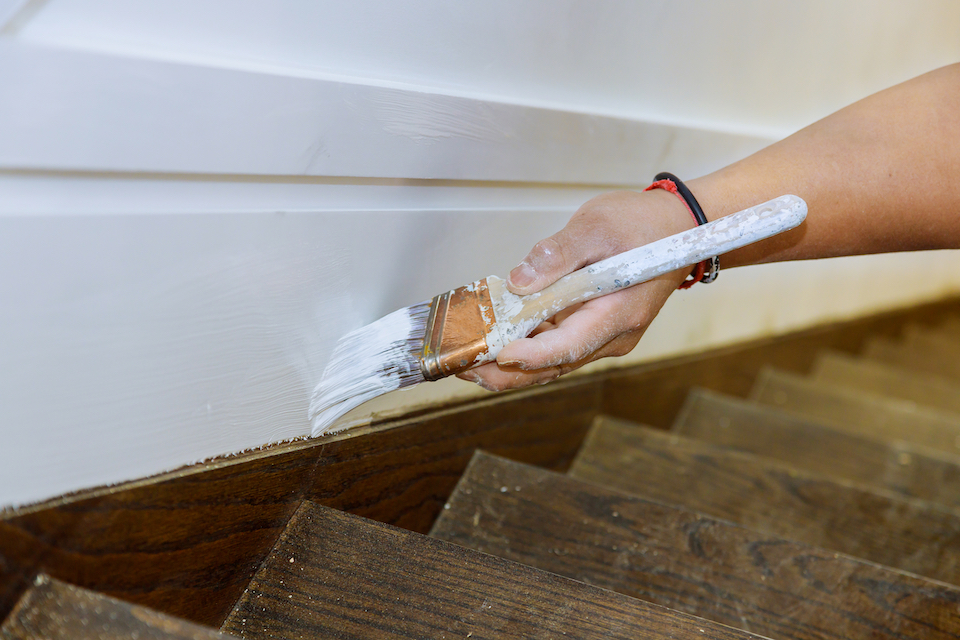How Much Does it Cost to Paint Interior Doors?
The way we think and feel is influenced by the colours and patterns we see around us; as a result, when the opportunity to utilise your favourite fabrics and paints arise, you should do your best to make the most of it, which necessitates an understanding of the associated expenditures on your side.
What you'll get out of this guide...
Here we will go through the different costs to paint interior doors. We will go through the additional costs, labour costs, and supply costs. We will also go through the benefits of painting interior doors so you know you are making the right decision for your home.
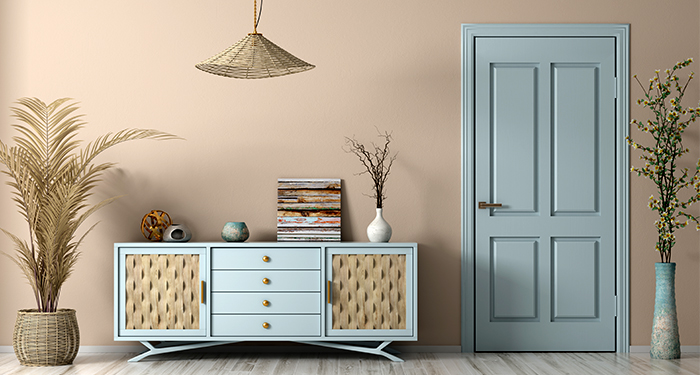
When it comes to painting prices, there are no hard and fast rules. Much will be determined by your location as well as the painter you select.
Hiring a painter in London, for example, may cost up to two times as much as hiring one in Sunderland.
However, a good suggestion is to calculate how much money you'd lose if you took time off work to paint and then compare that to the cost of hiring a painter.
What about the types of paint?
The type of paint you choose will have an impact on the price. The topic of choosing the proper paint extends beyond the ultimate appearance and feel of your home. The paint you choose is one of the most important aspects affecting your budget.
Matt emulsions, which are rather simple, are inexpensive under typical circumstances. If you choose a gloss or silk emulsion, though, you may have to stretch your budget a little farther.
Interior paints are stain-resistant, easy to clean and have a smooth texture. Exterior paints, on the other hand, fight colour fading and mildew formation.
They're also usually UV resistant and waterproof. Water is frequently used as a solvent in interior paints to prevent hazardous vapours from accumulating and to make clean-up easier.
Bolder interior door paint colours are more expensive than neutral colours like white or magnolia. Furthermore, you may have to spend far more than the average if you want bespoke paintwork. Keep an eye out for special offers and discounts.
Here's a useful tip...
When you buy paint in quantity, you can sometimes obtain pretty good deals. Before you invest your money, compare the paint pricing at other stores.
When it comes to starting a painting project, a lot of the decision-making is based on the cost. Before you start painting your doors and/or trim, you should figure out how much you'll be spending.
Whether you're doing it yourself or getting a quotation from a professional painter, you'll need to start by measuring everything that needs to be painted.
The average cost of painting an interior door is determined by its size, the number of doors to be painted, and the average labour rates in your area.
Painting most interior doors costs between £50 - £200. However, doors that open to the outside may be more expensive, costing up to £200 - £300.
The cost of glossing a door varies based on the type of paint used and the number of coats required, but it should be roughly £60 - £100 per interior door.
Are they any other points worth considering?
While you can recoat some painted doors and obtain a decent finish, you won't be able to save the paintwork on others.
To remove all that goopy, lumpy old shine, you'll need to hire a paint stripping or 'dipping' service. The cost of door stripping varies between £15 - £25 per door. Safety precautions must be taken when stripping paint, and proper protective gear must be worn.
Removing hardware on the door, such as hinges and door knobs, is also a common practice before painting. The time this takes will add to the labour costs.
Paint Interior Door Prices
The table below will break down the costs to paint interior doors:
| Job | Cost |
|---|---|
| Painting interior doors | £50 - £200 |
| Painting interior doors that open to the outside | £200 - £300 |
| Glossing interior doors | £60 - £100 |
| Door stripping | £20 - £35 |
What are the Supply Costs to Paint Interior Doors?
Another way to save money is to buy materials yourself or make it plain to your painter that you will pay for items separately and require copies of all receipts.
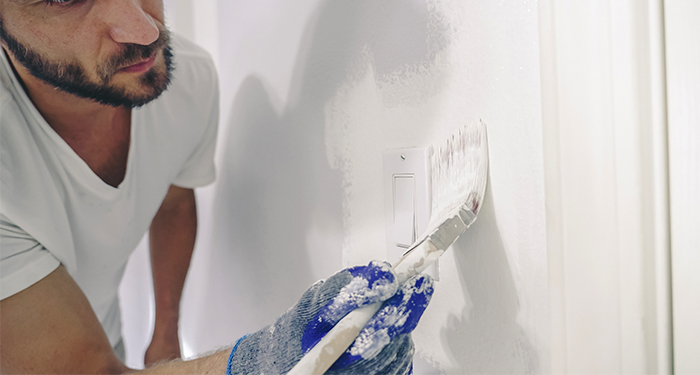
It is not uncommon for a decorator to add 20% to the cost of supplies to cover the cost of procuring them, as well as the danger of not being paid after the job.
After all, they can't take their paint back! Pay for materials as you go, and your painter will be pleased, but never pay in advance.
If you're handy around the house and confident in your abilities to paint a door, you might want to go the DIY route. However, painting doors is one of the few circumstances when hiring a pro is more cost-effective.
This is due to the high cost of materials. If you have a lot of painting supplies and only need paint, your DIY prices will be substantially lower than if you hire a professional painter.
However, if you don't have any painting supplies, hiring a pro might be a better option! It just depends on the cost of your materials vs the cost of hiring a professional painter.
Here we will go through the different supply costs that you will need to paint interior doors.
A dry cloth will cost you £3 - £10. Painters tape will cost around £1.50 - £9, and a paint roller frame will cost £3 - £10.
Paint roller covers will cost £4 - £20 depending on the quality of the roller; however, for a good job, a good quality paint roller cover is recommended, and a paint tray will cost £0.69 - £7.
Paint brushed will cost £10 - £15 these will be needed for detail on your interior doors, the primer will cost you £22 - £39 per litre, stain and varnish cost £22 - £52 per litre, and paint will cost £22 - £48 per litre.
For protection, you will need a disposable painters mask, which costs £2 - £12, and disposable gloves will cost £2 - £3. The table below will break down the supply costs of painting interior doors.
| Type of paint | Price |
|---|---|
| Dry cloth | £3 - £10 |
| Painter’s tape | £1.50 - £9 |
| Paint roller frame | £3 - £10 |
| Paint roller frame | £4 - £20 |
| Paint roller | £4 - £20 |
| Paint tray | £2 - £7 |
| Paintbrush | £10 - £15 |
| Primer | £22 - £39 |
| Stain & Varnish | £22 - £52 |
| Covering paint | £22 - £48 |
| Disposable painters mask | £2 - £12 |
| Disposable gloves | £2 - £3 |
For two coats on both sides, an average door requires one quart of priming and one quart of paint. The amount of primer and paint required is determined by the door type, current colour, surface condition, and material.
When using a 2-in-1 paint and primer or premium paint, apply one layer. For severe colour changes, painting over a glossy surface, and ensuring an even shade of colour, apply two layers of primer and paint. Oil-based primers and paints should not be used with water-based primers and paints.
Although you probably won't need to purchase everything on this list if you've painted before, you likely will only need a single gallon of paint to cover one door.
What are the Additional Costs of Painting an Interior Door?
When hiring a tradesperson to paint your interior doors, there may be other jobs you want to be completed at the same time, which could increase your costs. Let's take a look at a few now.
Hanging a Door
While painting an interior door may seem straightforward, rehanging the door after painting is often considered an additional service.
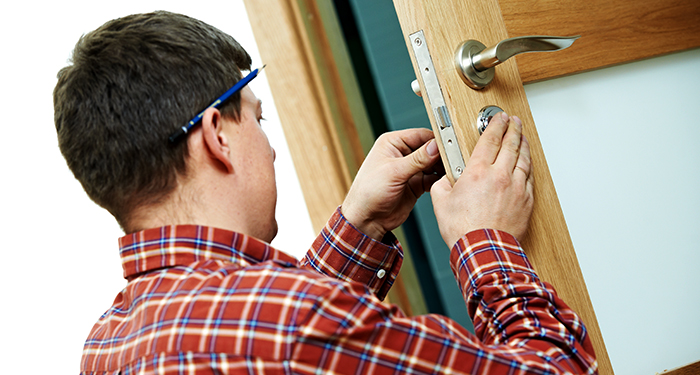
The reason for this is that hanging a door properly requires more time, tools, and precision than simply applying paint. The process involves:
- Aligning Hinges
- Ensuring the Door Swings Smoothly
- Adjusting the Latch
- Potentially Planing or Trimming Edges
The cost to re-hang an interior door after painting is between £40 - £90.
Painting and Decorating
If you also want your walls, skirting boards or window frames painted to give your rooms a full fresh feel, this will increase the budget needed.
Interior painters and decorators will charge varying amounts depending on the size of the job required. Below are some examples of costs you may be looking at.
- Painting a Room - £180 to £600
- Painting Skirting Boards - £180 - £350
- Window Painting - £400 - £1,500.
For significant decorating works such as painting or wallpapering many rooms, a usual quote for hiring a painter and decorator is from £150 - £300 per day for labour. For smaller painting jobs like painting door frames or skirting boards, this could be charged by the hour. Expext to pay better £15 - £40 per hour.
Additional Cost Factors
When solely looking at painting interior doors, there are a variety of factors that could influence the cost.
Location of the Door
The location of a door is crucial, as the more accessible it is, the easier it will be for a contractor to do the job. In this situation, the higher the labour expenses, the longer the job takes.
Size
The larger the door, unsurprisingly, the more it will cost to paint. Of course, this isn't always the case, but a larger door will often require more materials and take a little longer to maintain than a smaller door. However, this is unlikely to be a significant financial consideration.
Duration
The length of time it takes to complete the job may or may not have an impact on the entire cost, and it ultimately depends on how the tradesperson works. In certain circumstances, a contractor will be paid a fixed amount up front, while in others, they would be paid by the hour.
Location
The cost of living in your location will influence the pricing that individuals or businesses set, and supply and demand levels in your area will also go into the total cost.
Another thing to think about is how quickly nearby service providers can get to your property. As their path lengthens, their fuel costs will rise, raising your total payment.
Amount of Doors
The number of interior doors in your home will have an overall effect on your price, as the more doors you want painting will add to your overall cost.
Minimum Fee
Some painters apply a minimum charge to cover basic overheads, regardless of how small the job is. This might be a flat fee or the cost of a set number of labour hours. For example, if the minimum covers four hours but your door takes only two to paint, you’ll still pay the full amount, effectively increasing your cost per hour.
Tradesmen Costs of Painting an Interior Door
Hiring a professional painter ensures a high-quality finish, especially for detailed work like doors. While some view it as a simple task, experience and precision make a big difference.
Most painters won’t give accurate quotes over the phone—they need to inspect the door’s condition and access. Always ask questions upfront to avoid surprises.
Independent painters or those working below the VAT threshold may offer lower rates (up to 20% less than larger firms). Retired or semi-retired decorators may also take on small jobs at competitive prices.
Expect to pay:
- £150–£300 per day, depending on location (higher in London and the South East)
- £15–£40 per hour for smaller tasks like door or frame painting
Drying time between coats and paint type can affect how long the job takes. While hiring a single tradesperson may seem cheaper, the work could take longer and cost more overall. For larger jobs, decorators often work in pairs to finish faster.
Benefits of Painting Interior Doors
Repainting your inside doors is a cost-effective approach to modernising your property. You may modernise your home with a fresh coat of white paint or add a burst of colour to your interior doors to match your design style.
It's also a budget-friendly alternative for novice DIY home renovation! Continue reading if you want to learn about the numerous advantages of painting your interior doors.
Fresh Paint
As your paint ages, it will begin to show its age, making your property appear old and unappealing. Painting your doors will ensure that they will match flawlessly for many years.
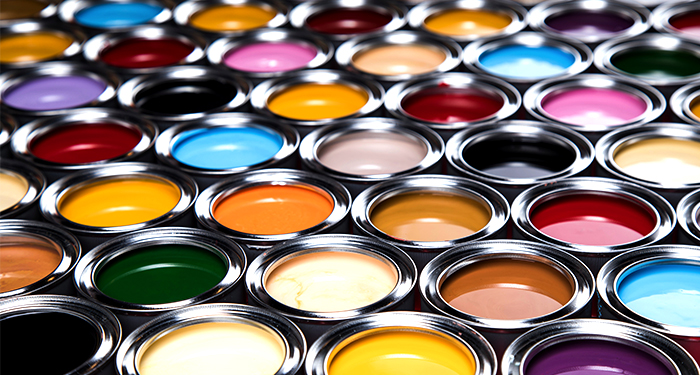
It also makes your home appear cleaner and more in line with your home's aesthetic!
Cheap Labour Costs
If you hire a professional painter, you'll save money on labour because painting labour assignments are typically not very expensive for small jobs. You'll end up paying separate project fees if you split the job into two or more projects.
Faster Drying Time
Instead of having your unfinished work act as a continual reminder that there's still work to be done, setting out to complete the entire job means you'll be free of tension and able to enjoy your interior rooms much sooner.
Resistant to High Humidity
Painting your interior doors promises that your doors will have a longer life expectancy. The outer layer prevents the surface from absorbing water and deforming as a result of moisture changes. The models are appropriate for use in kitchens and bathrooms.
Practicality
Contaminants are simply removed, and the surface is unaffected by disinfection and cleaning solutions. Unpleasant scents are not absorbed into the structure because of the paint and varnish layer.
FAQs
Q: How do you paint an interior door without brush marks?
A: Without removing the door, you may still paint it. However, to avoid the mess produced by running paint, we propose pulling it off its hinges and setting it on a horizontal workstation.
Because the door is sitting horizontally, the paint will have more time to level out, resulting in a clean finish.
Or, if prior paint jobs left brush traces on the door, you'll need to sand it down to remove them. Sanding also aids the primer's adhesion.
Remove chipped paint, the runny paint, and brush strokes from the flat panels of the door with a somewhat coarse 100-grit sandpaper. To finish the task quickly, use a random orbital sander.
Remove imperfections from the grooved profiles of the door with sanding pads.
Before painting, smooth out the door with gentle sandpaper of 120-150 grit. Sweep the sanding dust from the door with a vacuum, then wipe it clean with a moist cloth. Allow time for the paint to dry before applying it.
Q: What’s the best paint for an internal wooden door?
A: Interior doors are subjected to a lot of wear in everyday life, so you'll need paint that can withstand it. Semi-gloss or gloss paint is significantly easier to clean than matte paint, and it will also hold up much better when wiped frequently.
Matte paint collects dirt and is difficult to clean; nevertheless, removing the paint may lose the finish. As a result, semi-gloss or gloss paint will work better for painting things like doors because they get dirty and are used frequently, as well as requiring to be cleaned frequently.
If the door's current finish is shiny, you'll need to apply a de-glosser to dull the sheen before repainting it with your new paint. Some well-known companies now provide a 'rapid dry interior' paint that would be ideal for use on doors.
Q: Is it best to paint with a roller or a brush?
A: Using a brush, remove the rolled paint. Brush markings are less obvious than roller stipple, and brushed paint usually levels out better than rolled paint. Roller results can be extremely smooth when using high-quality enamel and roller sleeves.
Q: Should you paint the inside of your door?
A: The side of the door that swings inward toward you should be painted the same colour as the interior of the door when you open it from the inside. When you open the door, this will help to keep everything in order and give you a more uniform appearance.
Q: What prep is needed before painting interior doors?
A: Clean the door with a degreasing cleaner before painting. With sandable filler or spackle, patch holes and mend flaws. Sand the door with 120-grit sandpaper to create a smoother surface that will absorb primer or paint more readily. Remove dust from the area after sanding before priming or painting.

